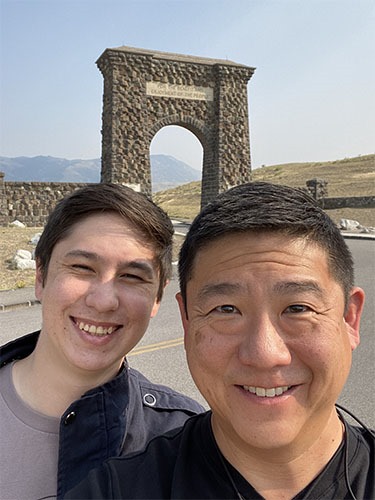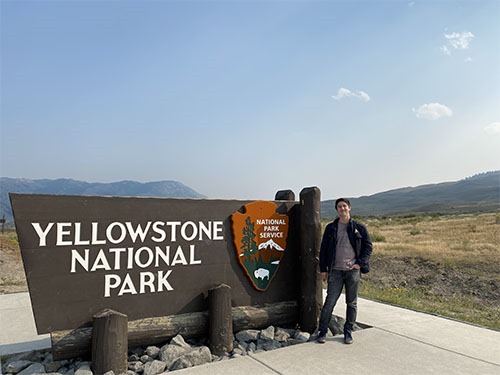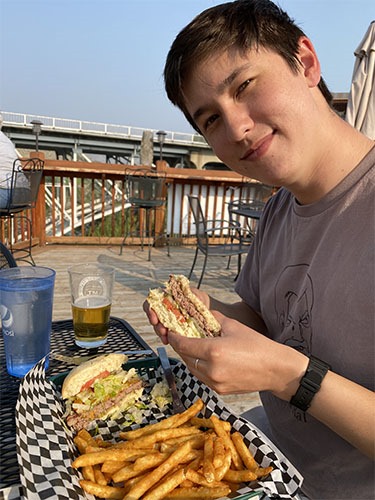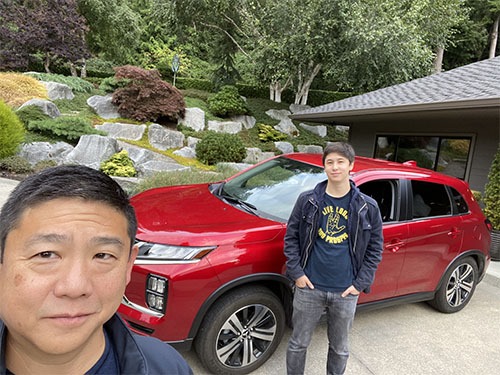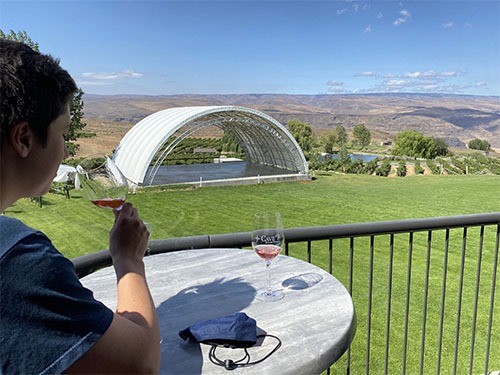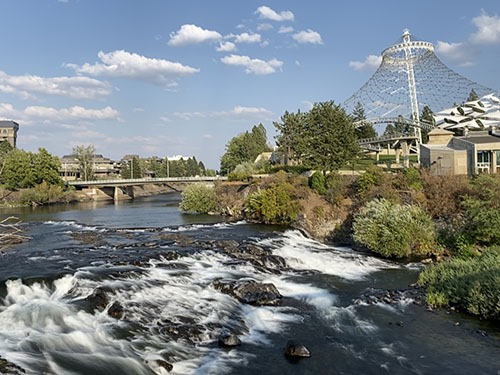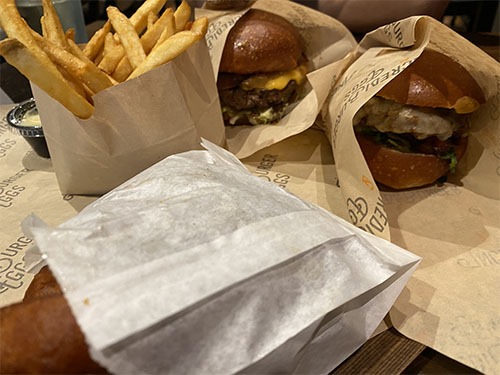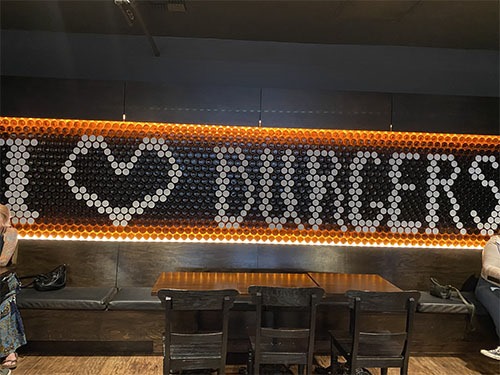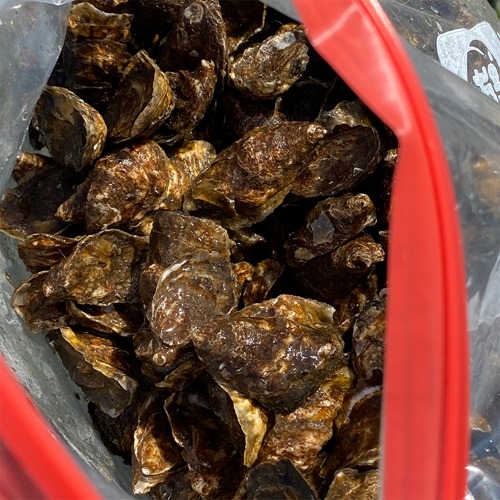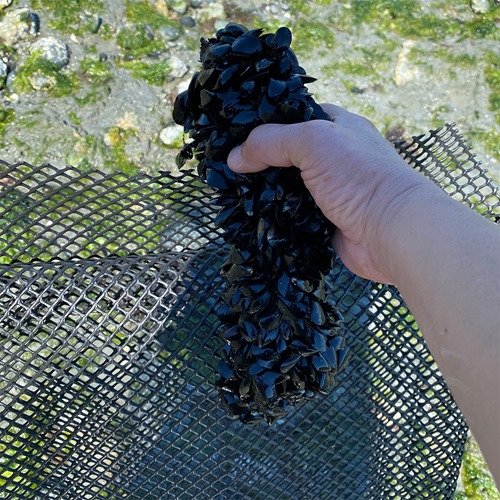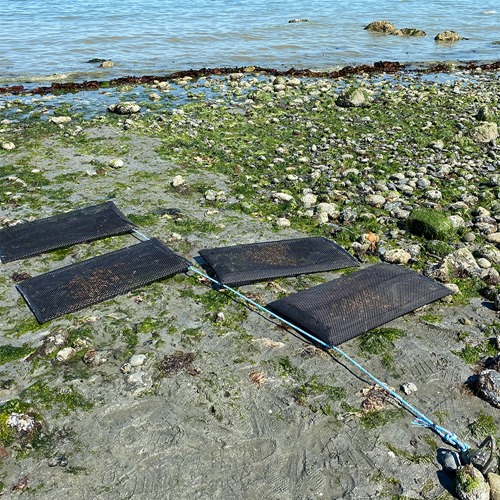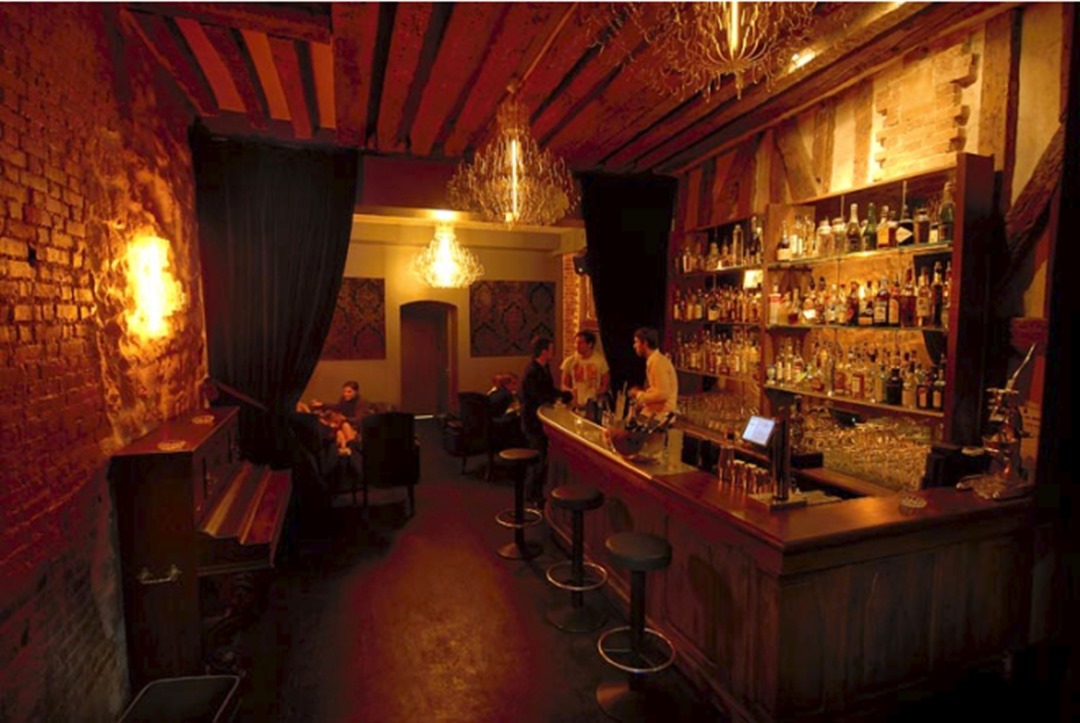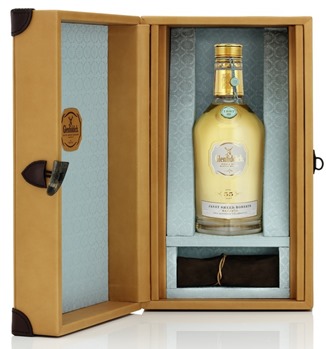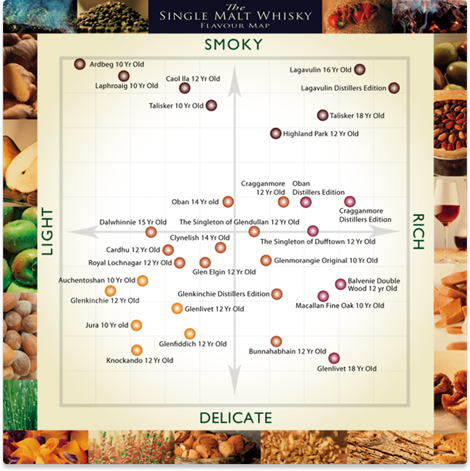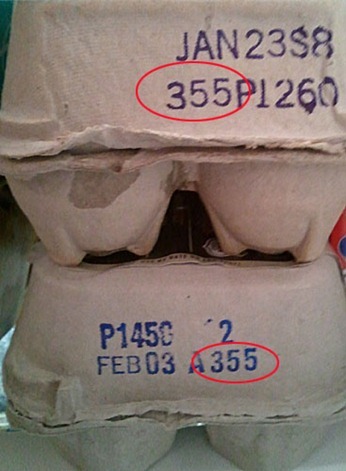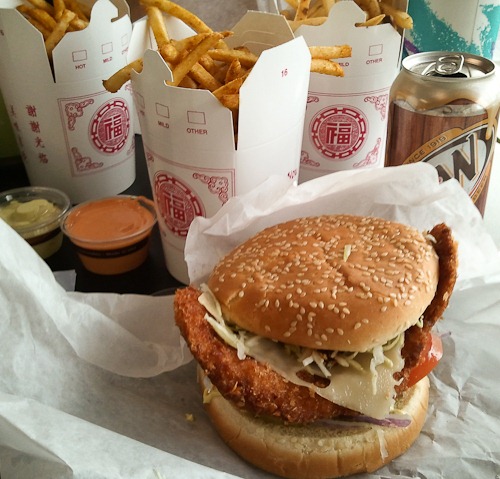Tokyo is one of my all-time, very most favorite cities in the world. Everything you see is either the coolest thing you’ve ever seen or the weirdest. It’s definitely worth going to multiple times. I’ve sent some variation of this note out to friends for years, so I figured I should finally just publish it. I’ll update it as I visit and learn new things.
Getting around
Airports
There are two main airports for Tokyo: Narita and Haneda. Narita is the bigger international airport, but it’s pretty far away (an hour by bus or train). Haneda is the older airport in town; it was recently refurbished so it’s my first choice if you can use it.
If you fly into Narita, there are two good ways to go to/from the airport. Taxis are not one of them (very expensive and Narita is far from town.)
- Narita Express (N’EX) – This is the train that goes from the airport to Tokyo Station and Shinjuku Station. From the train station, you can either take the subway or a taxi to your hotel, depending on how much luggage you have and your confidence navigating Japanese subways after a long flight. This is my favorite way to get to/from the airport during rush hour. I usually take this route when I arrive in Tokyo. Look for the JR East (Japan Railway) signs after you exit customs. You need to buy the ticket in the airport lobby then walk to the N’EX stop in the airport (maybe a ten minute walk). First class isn’t worth the upcharge (just a little more legroom).
- Airport Limousine Bus – This bus goes from the airport directly to your hotel. It’s super convenient and the least expensive solution. The only downside is that it can be deadly slow in rush hour. I usually take this from the hotel to the airport. Buy the ticket from the concierge ahead of time to reserve space. Note, when you arrive at the airport, there will be a security check where police come aboard the bus and check passports. You MUST have your passport on your person, not in your luggage stored below in the bus. Also, don’t lose your luggage claim tag since they’ll check them as you pick up your luggage.
If I fly into Haneda, I usually just take a taxi into town and back, although you can also take the subway or Airport Limousine Bus. There are excellent restaurants upstairs on the outside of security. I especially love Ramen Setagaya.
Taxis
Taxis in Tokyo are excellent – clean and easy to find; they are, however, very expensive (about USD$10 just to get in.) Uber is available there too, although I haven’t found the need to use it. Apparently, Line Taxi is more popular (since the chat app Line is super popular too.) One note: the driver will open/close your door via a lever. Do NOT close the door after you get into or out of the taxi since you may swing his lever and hit the driver. (Funny aside, taxi drivers around the world hate Japanese tourists because they leave their doors open.) Also, bring a taxi card or a note written in Japanese with your destination. Many drivers do not speak any English.
Subways/trains
Tokyo’s subways are awesome and very on time. They’re the best way to get around. They can, however, be confusing since there are several rail companies operating in the same stations. If you buy single tickets, you have to know which company to buy from and then use their station entrances/exits. You may also need to pay for transfer tickets. Ticket price is based on distance, so you need to know where you are and where you’re going. Use the big maps to figure this out, but it can be time consuming to figure out. Most rides in town are 100-230 yen.
It’s much more convenient to get a Pasmo card or a Suica card. These are stored value cards that you just swipe as you enter and exit the stations. This is much easier than trying to figure out how much your ticket price should be for each trip. You should buy a card at a subway station when you first arrive in Tokyo; you can get them from some of the ticket machines. Many stores (like the awesome 7-11s) and vending machines accept Pasmo and Suica cards for payment too. There’s apparently some difference in which train lines accept which cards, but I’ve just used a Pasmo with no problem. The minimum first purchase is 1000 yen (~USD$10). You can add money to the card later as needed; the turnstyle will tell you how much you have left as you leave the station.
The subway stations are a cool tourist destination on their own, especially the bigger ones like Shinjuku Station (busiest train station in the world) or Tokyo Station. Lots of cool shops and excellent restaurants. They can be huge, so make sure you use the maps to figure out where you need to exit the station. If you pick the wrong exit, you could be very far from your destination or even on the wrong side of the tracks with no easy way to get across other than going back through the station. If you talk to someone at your destination (e.g. a restaurant) you should ask them which station exit you should use. During rush hour, the stations can be ridiculously crowded. This can be fun to see (e.g. Shinjuku Station on the Yamanote Line platform) or horrific. Plan accordingly.
Street addresses
The Japanese have the most f’ed up street addressing system. They seldom use the street name in the address and house numbers (if there’s a number at all) are set by the order the building was constructed, not by the relative location on the block. Even when they rebuilt after WWII, they didn’t fix the stupid thing. As a result, maps are critical. Most business cards for a restaurant, etc. will have a map. Make sure you get maps from the concierge.
You’ll often see addresses in the form “5-5-8 Ginza, Chuo-ku, Tokyo”. Important concept: Japanese name the block, not the street. “Tokyo” is the city. “Chuo-ku” is the ward. These aren’t too helpful in this context. The first number is the district #. The second is the block#. The last is the building #. “Ginza” is the sub-area in the district. You’ll see the block numbers on street signs and on buildings. Here’s a good visual explanation: http://sivers.org/jadr
Neighborhoods
Although Tokyo is one continuous, huge city, it is organized into wards and districts, similar to New York City’s boroughs and districts. When you’re talking about an place in Tokyo, you generally start by describing by ward or district (these are the places like Roppongi, Shinjuku, Shibuya, and Meguro that I mention below). More info from Wikipedia.
Hotels
I’ve stayed in a few hotels for work and personal trips.
- Grand Hyatt Roppongi: Great place in the middle of Roppongi. Nice to get a room with club access for an easy breakfast or a drink after walking around all day. This is our go-to hotel in Tokyo.
- Mandarin Oriental: This hotel is in Nihonbashi, an older, more business-y area of town. The hotel is on the top few floors of this 30+ story skyscraper. This is probably the nicest place we’ve stayed and the one we’d probably go back to again if not for the price. The restaurants are crazy excellent.
- Four Seasons at Marunouchi: This hotel is in the center of town, between the Imperial Palace and Tokyo Station. The staff will pick you up from Tokyo Station and lead you back to the hotel if you like (it’s that close). Service is impeccable, as you’d expect from a Four Seasons.
- Cerulean Tower Tokyu Hotel: This is a good business hotel, super well-located a stone’s throw from Shibuya Station. For people visiting Amazon Japan, this a convenient place to stay since it’s just a quick subway ride to Meguro, where the office is.
- Hotel New Otani: This is the grand dame of Tokyo hotels with a very 60s cool vibe; it’s in Akasaka near the Imperial Palace. The fact it was in a James Bond movie (You Only Live Twice), has a beautiful garden, and has two Kyubei Sushi branches (see below) makes it especially great. The rooms are small but pretty up-to-date. I can’t remember the difference between the Main tower and Garden rooms, so check reviews online before booking. I’ve frequently seen older Japanese women in kimono meeting in the garden restaurant/bar, which is cool to see.
I haven’t stayed at the Park Hyatt in Shinjuku yet (made famous in the movie Lost in Translation), although I’ve had a drink there. Other friends have recommended it highly.
Places to Eat
Tokyo is one of my very favorite eating cities in the world. Restaurants in Tokyo almost always specialize in one thing (ramen, katsu, etc.) vs. serving a wide range of stuff like Japanese places in the US. Tabelog is the local equivalent of Yelp. Most of it is in Japanese, not surprisingly, but the reviews and photos may still be helpful. Yelp is there too. Most of the restaurants I list below have English menus (I’ve noted the ones that don’t); the staff will have varying degrees of English, but you should be able to get by with pointing at the menus.
Ramen in Tokyo is awesome, as you might expect, with a lot of diversity of styles. Note, there can be a line at these places. It’s common to get some gyoza (Japanese potstickers) and a beer with ramen. Some eat rice too, but that seems too filling and crazy to me.
- Jangara Ramen: Rich, pork (tonkatsu) based broth, sometimes described as funky (this is Kyushu style). I always go back to Jangara. There are a few branches including one on Omotesando Dori (Ave) – nice shopping/tourist street). Here’s my blog post. And another. There’s another one in Akihabara, the electronics district – good for a bite if you’re out electronics shopping. I seem to recall they only take cash, but that could be a mistake.
- Ippudo Ramen: This is a lighter (than Jangara) style of pork broth, originally marketed for women. It is also amazing. There are several branches of this place too. This is my sons’ favorite place. My blog post. There are Ippudo Ramen stores in San Francisco and NYC now (as well as other cities around the world).
- Ramen Jiro: This is the advanced class, not for the faint of heart. Jiro has been described as the “Ramen Nazi” ala the Soup Nazi. It was even highlighted in an NPR story. This is a super thick, fatty, rich, amazing bowl of noodles with a cult fanbase. No English here, but then there’s virtually no talking. You wait in line, buy a ticket from the machine to determine if you want a regular bowl, big bowl, and/or extra meat (get the low priced one – it’s huge). Bring cash and coins for the machine. When you come up in line, sit down at the bar. You will not get to sit with your friends. Put the ticket on the bar. Just before you get your bowl, they’ll ask you for options. You must reply in Japanese if you want vegetables/beansprouts (yasai), an extra ladle of pork fat dumped over your noodles – amazing (abura), and garlic (ninniku). When the bowl arrives, stick your face in and eat as quickly as you can. No talking. When you’re done, put the bowl back up on the counter, wipe your place setting, and leave. Quickly. It’s a bit intimidating, but it’s a truly Japanese experience. Some people (including me) simply cannot get enough, others are grossed out by it. Here’s a good step-by-step guide. There are several branches of this place too. My blog post
- Menya Ishin: This is a special ramen place; their soup is chicken-based vs. the pork based broths almost everywhere else. They’re in Meguro, near the Amazon offices, which is bonus for me. However, I don’t think they have any English menus.
Katsu is also excellent. These are fried pork chops, sometimes served with Japanese curry (katsu curry) – one of my favorites.
- Mai-sen: This is a famous shop with delicious katsu. The main shop is a few blocks in from Omotesando Dori. TripAdvisor write-up
- Katsukura: This is my wife’s favorite katsu place (she’s always right…) It’s on the 14th floor of the Takeshimaya Department Store (tall tower) in Shinjuku. Excellent and a different, more sophisticated vibe than Mai-sen.
- Butagumi: Another excellent katsu place. We go here often since the Roppongi Hills location is pretty convenient. Bon Appetit write-up
Tempura (deep fried fish and veggies) in Tokyo is an art and way better than in Seattle. The most ridiculous places have Michelin stars and will set you back hundreds of dollars per person. In the interest of frugality, go to Tsunahachi. There are several branches.
Other places I love (in no particular order):
- Morimoto XEX: This is a Michelin one star restaurant in Roppongi opened by the Iron Chef Morimoto. Crazy awesome steak house – good for your Kobe beef fix. Not cheap (at least USD$150-200/pp). I still dream about this meal though. My blog post.
- Keyakizaka: This is another teppanyaki/steak place; it’s located in the Grand Hyatt Roppongi. My family still talks about the Christmas meal we had there once. Andrew (21) hasn’t ever liked fish (even in Japan) but he ate every morsel of fish he had at Keyakizaka. Another not cheap place though.
- Inakaya: This is a fun robata-yaki place in Roppongi. You point at stuff you want to eat (fish, veggies, kebabs, etc.) and they grill it for you. Simple and tasty. No place like this in Seattle. My blog post.
- Restaurant Kurosawa: This is another one of our very favorite places. They make their own soba here (buckwheat noodles) but everything is done very precisely and well. Nice décor too. It’s an homage to the Japanese film director by the same name. Right across the street from the Roppongi Grand Hyatt entrance. My blog post
- Kyubey Sushi: This is a famous sushi chain with a few locations. Ideally, sit at the bar and order the omakase (chef’s choice). You can keep eating until you’re full, then wave him off. He’ll put the “right” seasoning on each piece (a brush of soy sauce, a little salt, whatever). Don’t dip into wasabi/soy here.
- Harajuku Gyoza: We almost always stop at this gyoza (potsticker/dumpling) place for lunch when we’re in Tokyo. It’s delicious and pretty cheap. It’s a good stop if you’re checking out the Omotesando/Harajuku/Meiji Shrine area.
- Breakfast buffet at the Mandarin Oriental: We’ve had many good breakfast buffets in hotels around the world, but this was the Tiger Woods/Serena Williams/Wayne Gretzsky/Michael Phelps of buffets – special among the special. I think it was technically in the K’Shiki Italian restaurant, but the buffet drew from all of the restaurants at the hotel (most of which I think are Michelin-starred or should be). Everything down to the eggs and milk were sourced from the best places around Japan and were miraculously tasty. It doesn’t hurt that the restaurant and hotel enjoy crazy views since they’re on the top few floors of a skyscraper.
- Itadori Uogashi Senryo: This is a casual little place in the Tsukiji Outer Market (near the old fish market) that serves amazing mixed seafood bowls. I had their specialty: mixed seafood hitsumabushi. This is a big wooden bowl with rice and different kinds of sashimi. You first eat the rice and sashimi. Then, then they mix in sea urchin/uni, which adds a smoky depth. Then, then add soup to it to make a ochazuki (rice soup). Each phase is remarkable and delicious. We went for breakfast after touring the market. (Now that the fish market has moved, you probably won’t be there as early, but it’s still worth exploring the area and eating there.)
- Sangosho Moana Makai: If you go to Kamakura, you must go to this beachside restaurant for the very best Japanese curry I’ve ever had. It’s so ridiculously good that Michelle has spent years trying to replicate it. Their beef salad is almost equally memorable and definitely worth having too. They’re super popular and don’t take reservations AFAIK, so get in line before they open (and have your whole party with you). It’s doubly good to go on a nice day since they have outdoor seating overlooking the ocean and beach.
- KITKAT Chocolatory: This is a crazy little shop with fancy KitKat flavors (yes, KitKat candy bars). Upstairs is a ice cream shop/snack cafe where you can enjoy some of the KitKat flavors.
A few other things
- “Draft beer” is “nama beeru”. It will always be icy cold and delicious…
- It’s customary to say “ita daki mas” when someone brings you food.
- Bakeries in Japan can be ridiculously good, especially for French-style pastries.
- 7-11 has very good to excellent quick meals. Really. They are totally different in Japan and China than in the US. Hot deli food plus good refrigerated meals.
- Yoshinoya is a good fast-food place with yakiniku beef (thin slices of marinated beef) on rice.
Other good things to eat – ask your concierge for recommendations
- Shabu shabu: this is where you cook meat, veggies in a shared pot, like a fondue. Delicious.
- Yakiniku: Korean-style grilled meat – grill at your table. Awesome.
- Yakitori: grilled meat on skewers, like satays. I like the grilled chicken wings and grilled chicken meatballs. This is bar fare. Eat with beer and edamame (boiled soybeans). Definitely more casual.
- Izakaya: Japanese bar food and just awesome. Kind of like tapas/appetizers with grilled/fried bits, sashimi, salads, etc.
- Kaiten sushi: this is conveyor belt sushi. It’s lower-grade/lower-priced sushi than places like Kyubey above, but better than most conveyor belt sushi in the US.
- Coffee: The Brazilians (Columbians?) exported super high grade coffee beans to Japan early on, so the Japanese developed a taste for really good coffee. Find a good (expensive) coffee shop for a great cup.
Things to do
- Tsukiji Fish Market area: The fish market moved recently (October 2018), but the area should still be fun to shop around the area – great shops with awesome knives, Japanese dishware (which we love), other food, etc. Also, fun to eat around the area, as noted above. Tekka-don (tuna sashimi over rice) is a common local dish – very fresh tuna indeed…(My blog post)
- Harajuku/Omotesando/Meiji Shrine: I lump these together because they’re all close to each other, but they’re really three things:
- Harajuku – Start at Harajuku Station. On Sunday mornings, the kids come out all dressed in their cosplay – rockabillies, Lolitas, etc. There’s a bridge by the entrance to the park where they seem to congregate. Turn right after you leave the station, as I recall.
- Takeshita Dori (Street) is just across the big road from the station. It has more youth culture shops, etc.
- Meiji Shrine – this is a lovely park with an old wooden temple. I almost always come here when I first arrive in Tokyo. It’s a good place to walk around and be in nature after a long flight. My blog post
- Omotesando Dori (Ave): sometimes called the Champs Elysees of Tokyo. Nice (expensive) shopping street. Jangara Ramen, Maisen, and Harajuku Gyoza (listed above) are in this area. The Kiddyland toy store is here too.
- Akhiabara: This is the electronics district. Tons of huge electronics and camera shops. Yodobashi Camera is the biggest, baddest camera shop. Bring your passport for duty free purchases. We like the video game arcades too.
- Roppongi: Upscale area, more popular with expats. Big, upscale malls at Roppongi Hills and Tokyo Midtown (a few blocks from each other). Fun nightlife, but watch out a bit for the dudes pushing drugs. The Mori Art Museum is good too. We usually stay in Roppongi, hence all the restaurants above.
- Asakusa: Fun area. I usually wind up here on most visits. There’s a nice temple (Senso-ji) here plus lots of little shops/booths on the way up to the temple. Find a place making fresh sembei (rice crackers) – awesome. The guys on the central drag will be more expensive than on the ones off to the side, but heck, they’re only a Y100 (~USD$1 so maybe you don’t care…)
- Imperial Palace: I’ve been here once. It’s pretty; good for photos on a nice day. Good place for a run, but note that everyone runs in one direction (CCW) around the park. The entire loop is a 5K.
- Shinjuku: Go out the east exit of the station (west is all office buildings) Lots of shopping here. Fun place to check out at night – pachinko, etc. The department store basements all have awesome food shops, like in England, etc. Takeshimaya is the most famous/best. There’s a Starbucks, REI, and Microsoft office near the south entrance of the station, so it’s sometimes called “little Seattle”. Krispy Kreme is there too…
- Shibuya: Busy shopping area. Lots of young people around. There’s a famous, super busy intersection by the subway station, called Shibuya Crossing. Fun to watch. You can also watch from the two story Starbucks looking over the crossing. Be sure to visit the statue of Hachiko at the station. This is in honor the dog that used to meet his professor owner every day after work; even after the owner passed away, Hachiko kept coming back every day. The Mandarake shop in Shibuya is a well-known manga/anime shop; it’s a basement overflowing with geeky goodness.
- Kamakura: Nice day trip by train to get away from Tokyo a bit. The main draw is a big Buddha statue, but the town is good too.
- Tokyo Disney: I’ve never been, but if you’re collecting Disney visits, here you go. You can take the subway/JR line there.
- Video games: ask the concierge to find you some video game arcades. Japan has way cooler games. I usually take my boys to a few in Shibuya. Some good ones in Akhiabara too. My blog post
- Look at the vending machines. Although these are less fun than they used to be, you can find all kinds of crazy stuff in them including panty hose, full-sized bottles of wine, hot soup (Michael (18) especially loves the corn soup), etc.
- Andrew (21) is a huge Gundam (big battle robots) fan, so a visit to the giant (60’) high Gundam statue in Odaiba was a must. They’ve replaced the one we saw a few years ago with a new one.
Shops
- Muji: This is a global phenomenon now and my family’s favorite chain store. (I’ve also been to the Mujis in Beijing, San Francisco, Vancouver, New York City, London, Paris, Munich, and Madrid. I have a bit of a Muji problem.). They have great office supplies plus clothes (too small for all of us), housewares, small appliances, furniture, food, and even pre-fab houses. You’ll see them all over Tokyo. Most will not have everything; the main store in Ginza is the best, but they’re all awesome.
- Sake Shop Fukumitsuya: This is a definite favorite of mine if you like sake and sakeware. Lovely, lovely sake glasses and pitchers. Excellent sake from the Fukumitsuya brewery, including aged sake – a rarity. They also have a sake bar. However, really no English spoken here. They have shops in Ginza and Tokyo Midtown. My blog post
- Takeshimaya: Big department store chain and the first department store in Japan. You’ll find everything here. The food court in the basement is gorgeous and awesome, although there’s no place to eat there so you’ll have to take away.
- Kamawanu: There are a few of these shops that sell tenugui – printed fabric used for towels, gift wrapping, handkerchiefs, wall hangings, etc. These make great gifts. We almost always visit when we’re in Tokyo; we use their tenugui all the time.
- Yodobashi: The biggest, baddest camera store ever. Worth going just to see the accessories.
- BIC Camera: The second biggest, baddest camera store ever.
- Don Quixote: I’ll admit, I don’t love this dollar store as much as my wife does, but it’s an amusing place to browse. Watch for odd products like face tissues/kleenex for men.
Cultural tips and other stuff
- No tipping, except if you have a private tour guide
- Hand over things like business cards and credit cards with two hands with the writing facing the person you’re handing it to, so it’s easy for him/her to read.
- Receive stuff like business and credit cards with two hands. If you’re receiving a card, read over the card thoughtfully. Treat the card as if it’s the person, so put it away nicely. Don’t shove it into your pocket.
- Don’t try to figure out the bowing thing. It’s a very complex deal. A small nod is probably all you need.
- In meetings the most senior person will sit in the middle of the table, like Jeff does. The most senior person from the other side will sit across (ala the hot seat). Seniority then sorts from the middle.
- In meetings, junior guys may defer to the more senior folks. You may need to draw them out.
- Remember that Japanese drive on the left side of the road, so watch out crossing the street.
- Credit cards are pretty widely accepted now including in taxis, but some cash is good for smaller places.
- Offices can be warm by US standards, so dress in layers.
- Japanese shops will take great pride in wrapping whatever you buy very nicely. It’s honestly a bit of a hassle since it takes a long time.
- Enjoy the fancy electronic toilets. Here’s a YouTube video explaining the buttons, since it can be a little intimidating the first time you encounter one. Note, the seats can be heated too, which is lovely but surprising the first time…
